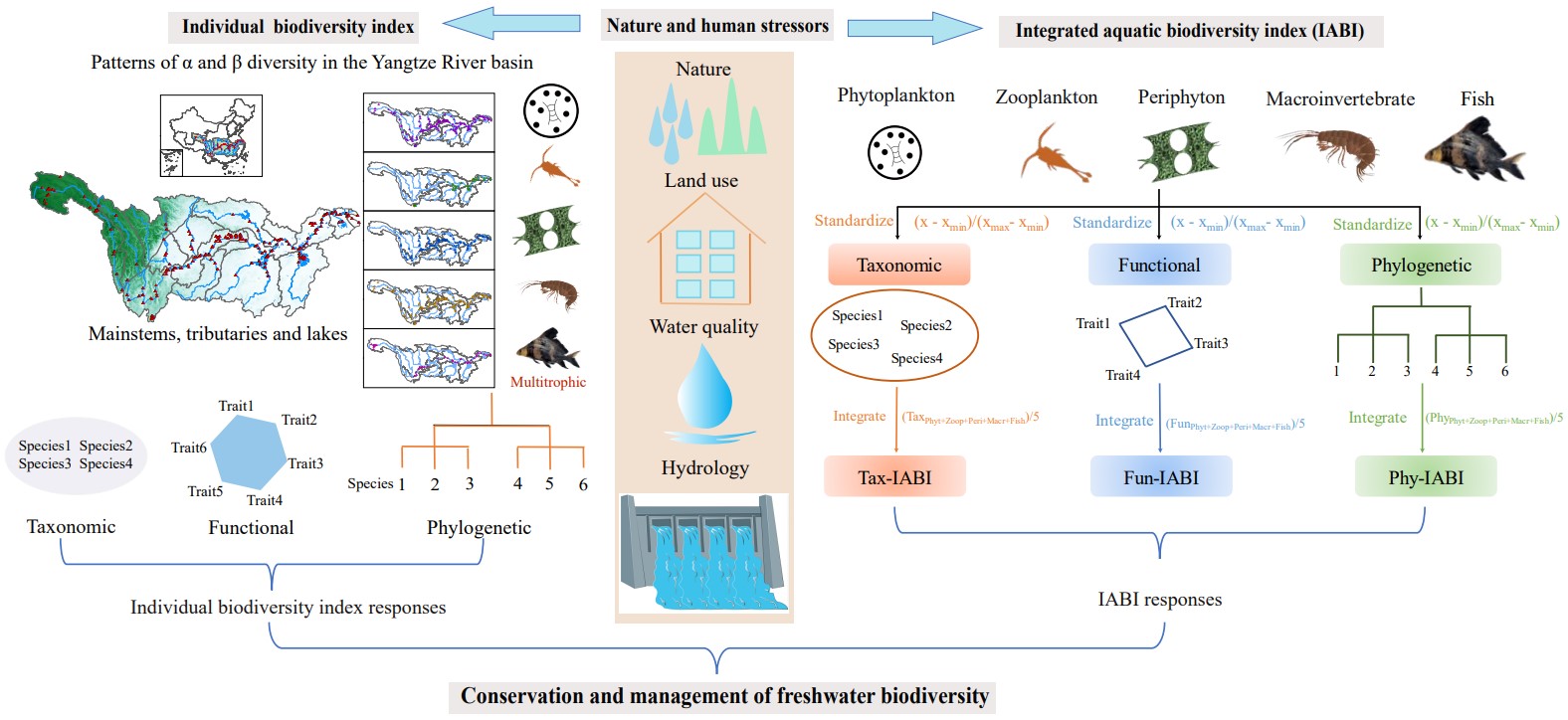
Newsroom
Hydrology and Water Quality Drive Multiple Biological Indicators in Dam-modified Large River
Earth’s biodiversity in the Anthropocene is undergoing severe changes. The fluctuating presence, frequency, and intensity of various stressors across different dimensions lead to a wide spectrum of responses, from individuals to ecosystems. However, studies on patterns of aquatic organisms based on large-scale multi-biota groups under multiple stressors are relatively uncommon, even in global biodiversity hotspots and key ecosystems. These studies are urgently needed to accurately identify those species groups at high risk and to determine priority conservation actions.
Accurate mapping and analysis of biodiversity variation under anthropogenic stressors is a prerequisite to halt global biodiversity decline. Such assessment based on mapping, analysis and prediction allows for the identification of single species or biotic communities currently at high risk in the ecosystemand provide the basis for forecasting the potential impacts of influential environmental stressors on organisms. It is therefore necessary to develop a research framework that includes both individual and integrated biological indices. Individual indices can reveal the sensitivity and adaptation of a specific taxa to environmental changes while the integrated index can inform the overall biological response to stressors.
A research group led by Prof. CHEN Yushun from the Institute of Hydrobiology (IHB) of the Chinese Academy of Sciences successfully used comprehensive datasets of five biological groups in the Yangtze River basin (YRB) to detect basin-wide freshwater biodiversity patterns and test how multiple natural factors and anthropogenic stressors affect individual biodiversity indices and the integrated aquatic biodiversity index (IABI). This study was published in Water Research X.
In this study, the researchers described the watershed distribution patterns of five biological taxa in the Yangtze River Basin. The results show that phytoplankton and fish species and functional richness increased longitudinally, while fish taxonomic and phylogenetic β diversity increased but phytoplankton and macroinvertebrate β diversity remained unchanged.
The researchers then combined individual biodiversity indices of phytoplankton, zooplankton, periphyton, macroinvertebrates, and fish with a novel integrated aquatic biodiversity index (IABI), and disentangled the effects of hydrology, water quality, land use, and natural factors on both α and β diversity facets in taxonomic, functional, and phylogenetic dimensions.
The researchers further found that hydrology and water quality emerged as the key drivers of all individual biodiversity indices, followed by land use and natural factors. Natural, land use, and hydrological factors indirectly affected biodiversity by altering water quality, which in turn directly influenced taxonomic and phylogenetic IABIs.
The findings highlight the complex interplay of multiple stressors in shaping freshwater biodiversity and underscore the importance of considering both individual and integrated indices for effective conservation and management, and point out the multi-faceted and integrated-indices approach can be applied to other large, dam-modified river basins globally.

Schematic diagram of hydrology and water quality drive multiple biological indicators (Image by IHB)
(Editor: MA Yun)